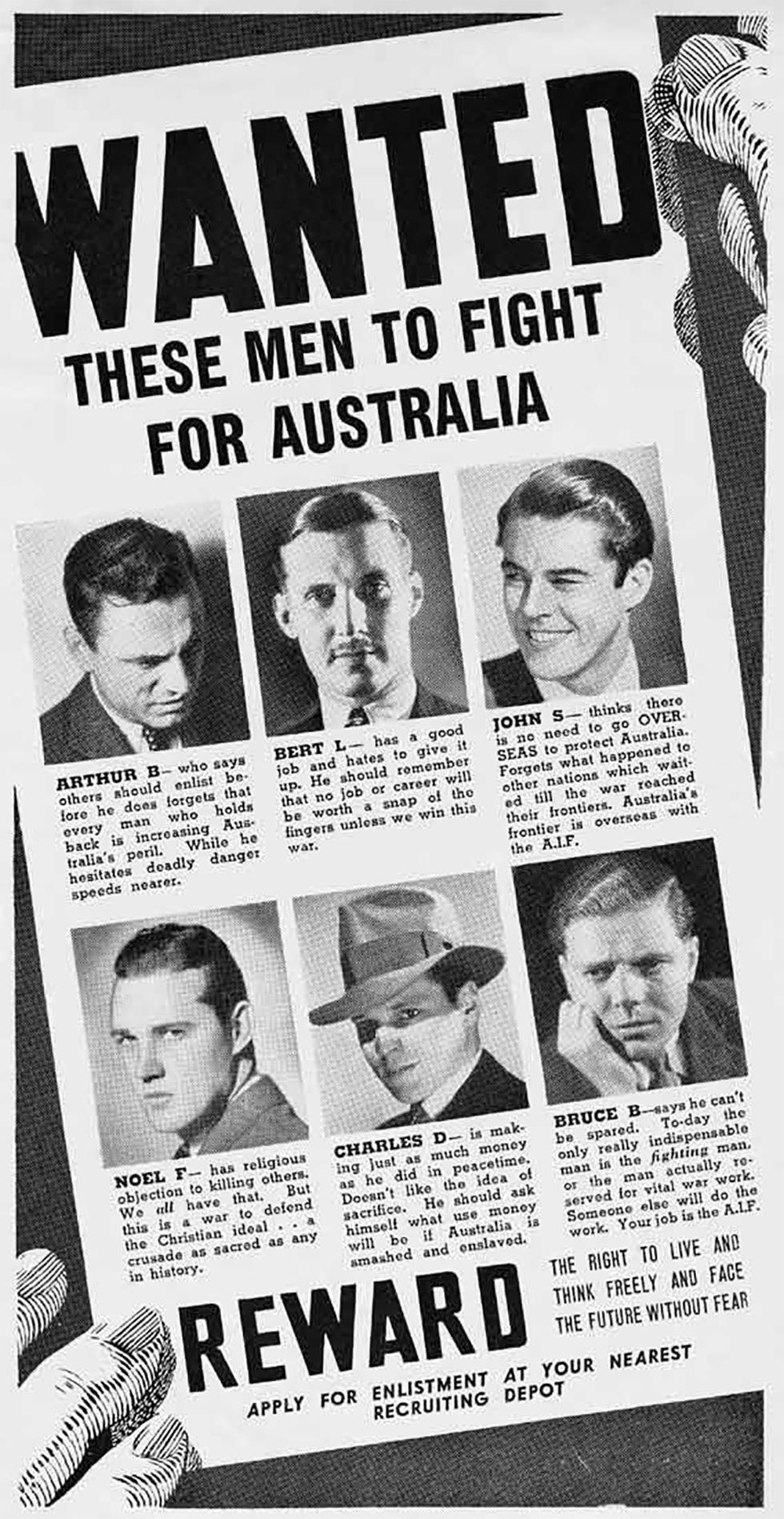
Recruitment poster for the Australian Imperial Force (AIF).
Aboriginal and Torres Strait Islander people should be aware that the National Archives' website and collection contain the names, images and voices of people who have died.
Some records include terms and views that are not appropriate today. They reflect the period in which they were created and are not the views of the National Archives.


Recruitment poster for the Australian Imperial Force (AIF).
This is a black-and-white recruitment poster designed to encourage Australian men to enlist in the army during World War II. It has an illustration of a person's hands holding a notice with the heading 'WANTED - THESE MEN TO FIGHT FOR AUSTRALIA'. There are photographs of six men, text outlining why each has not enlisted, and a counter argument for why each should.
Learning resource text © Education Services Australia Limited and the National Archives of Australia 2010.
Learn how to interpret primary sources, use our collection and more.
